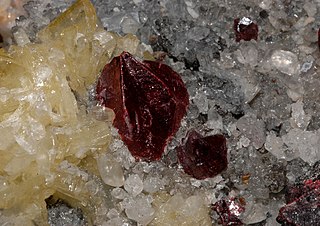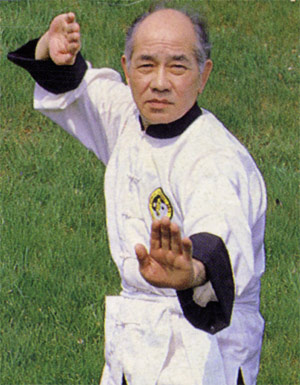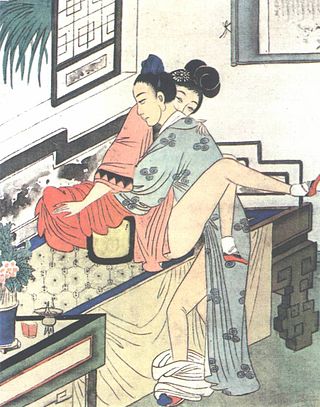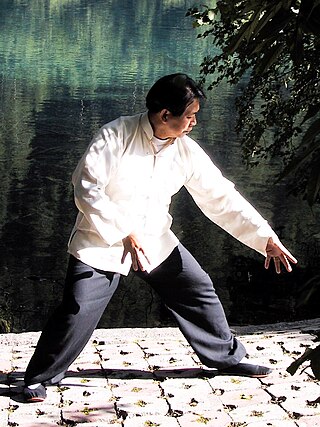
Taoism or Daoism is a diverse tradition indigenous to China, variously characterized as both a philosophy and a religion. Taoism emphasizes living in harmony with the Tao—generally understood as being the impersonal, enigmatic process of transformation ultimately underlying reality. The concept originates in the Chinese word 道, which has numerous related meanings: possible English translations include 'way', 'road', and 'technique'. Taoist thought has informed the development of various practices within the Taoist tradition and beyond, including forms of meditation, astrology, qigong, feng shui, and internal alchemy. A common goal of Taoist practice is self-cultivation resulting in a deeper appreciation of the Tao, and thus a more harmonious existence. There are different formulations of Taoist ethics, but there is generally emphasis on virtues such as effortless action, naturalness or spontaneity, simplicity, and the three treasures of compassion, frugality, and humility. Many Taoist terms lack simple definitions and have been translated in several different ways.
Chinese food therapy is a mode of dieting rooted in Chinese beliefs concerning the effects of food on the human organism, and centered on concepts such as seasonal eating and in moderation. Its basic precepts are a mix of Taoist Wuxing and eight principle theory that are concepts drawn from the modern representation of traditional Chinese medicine.

East Asian Madhyamaka is the Buddhist tradition in East Asia which represents the Indian Madhyamaka (Chung-kuan) system of thought. In Chinese Buddhism, these are often referred to as the Sānlùn school, also known as the "emptiness school", although they may not have been an independent sect. The three principal texts of the school are the Middle Treatise, the Twelve Gate Treatise, and the Hundred Treatise. They were first transmitted to China during the early 5th century by the Buddhist monk Kumārajīva (344−413) in the Eastern Jin Dynasty. The school and its texts were later transmitted to Korea and Japan. The leading thinkers of this tradition are Kumārajīva's disciple Sēngzhào, and the later Jízàng. Their major doctrines include emptiness (k'ung), the middle way (chung-tao), the twofold truth (erh-t'i) and "the refutation of erroneous views as the illumination of right views" (p'o-hsieh-hsien-cheng).
Jing is the Chinese word for "essence", specifically Kidney essence. Along with qi and shen, it is considered one of the Three Treasures of traditional Chinese medicine.

Chinese alchemy is a historical Chinese approach to alchemy, a pseudoscience. According to original texts such as the Cantong qi, the body is understood as the focus of cosmological processes summarized in the five agents of change, or Wuxing, the observation and cultivation of which leads the practitioner into alignment and harmony with the Tao. Therefore, the traditional view in China is that alchemy focuses mainly on longevity and the purification of one's spirit, mind and body, providing, health, longevity and wisdom, through the practice of Qigong and wuxingheqidao. The consumption and use of various concoctions known as alchemical medicines or elixirs, each of which having different purposes but largely were concerned with immortality.

The Lee style of tai chi (李氏太極拳) is closely related to a range of disciplines of Taoist Arts taught within the Lee style including Qigong, Daoyin, Ch'ang Ming, Traditional Chinese Medicine, Taoist alchemy, Feng Shou kung fu, and weapons practice. According to practitioners, it was first brought to the West in the 1930s by Chan Kam Lee and was subsequently popularized by Chee Soo who was the President of the International Taoist Society from 1958 until his death in 1994. The Lee style of tai chi comprises two forms known as 'the dance' and 'the form'. Other exercises include Yifu Shou or 'sticky hands', Whirling Hands, Whirling Arms, and various qi and Li development exercises. Lee style t'ai chi is related to Martial Arts training, and there are five distinct areas of development that comprise the whole Art:
- Physical
- Mental
- Breathing
- Sheng Qi
- Ching Sheng Li.

Taoist sexual practices are the ways Taoists may practice sexual activity. These practices are also known as "joining energy" or "the joining of the essences". Practitioners believe that by performing these sexual arts, one can stay in good health, and attain longevity or spiritual advancement.

Neidan, or internal alchemy, is an array of esoteric doctrines and physical, mental, and spiritual practices that Taoist initiates use to prolong life and create an immortal spiritual body that would survive after death. Also known as Jindan, inner alchemy combines theories derived from external alchemy, correlative cosmology, the emblems of the Yijing, and medical theory, with techniques of Taoist meditation, daoyin gymnastics, and sexual hygiene.

Ishinpō is the oldest surviving Japanese medical text. It was completed in 984 by Tamba Yasuyori and is 30 volumes in length. The work is partly based on a Chinese medical work called Zhubing yuanhou lun, compiled by Sui Dynasty writer Chao Yuanfang. Many of the texts cited in Ishinpō have been lost in China, and have only survived to the present through their inclusion in the work. It is a national treasure of Japan.
The chancellor was a semi-formally designated office position for a number of high-level officials at one time during the Tang dynasty of China. This list also includes chancellors of the short-lived Wu Zhou dynasty, which is typically treated as an interregnum of the Tang dynasty by historians.
The Qingjing Jing is an anonymous Tang dynasty Taoist classic that combines philosophical themes from the Tao Te Ching with the logical presentation of Buddhist texts and a literary form reminiscent of the Heart Sutra. It instructs students of the Tao to practice the elimination of desire in order to cultivate spiritual purity and stillness.

Qigong, is a system of coordinated body-posture and movement, breathing, and meditation said to be useful for the purposes of health, spirituality, and martial arts training. With roots in Chinese medicine, philosophy, and martial arts, qigong is traditionally viewed by the Chinese and throughout Asia as a practice to cultivate and balance the mythical life-force qi.

The Zuowanglun or Zuowang lun is a Taoist meditative text that was written by the Shangqing School patriarch Sima Chengzhen (647–735). Taoism incorporated many Buddhist practices during the Tang dynasty (618–907), and the Zuowanglun combined meditation techniques from Taoism, Buddhism and Confucian concept (正心誠意).
The Xiaodao Lun is an anti-Daoist polemic written in 570 for the Emperor Wu of Northern Zhou (543–578) by the Buddhist courtier Zhen Luan. After holding several inconclusive debates in the court, Emperor Wu commissioned the Xiaodao Lun as one of two reports examining the suitability of sponsoring either Buddhism or Daoism as a state religion for the Northern Zhou dynasty, with a view towards unifying China. The Xiaodao Lun mocked Daoist practices, accused Daoists of plagiarizing Buddhist texts, and portrayed the religion as dangerous to social stability. Its advice was disregarded by the Emperor, who supported the preservation of Daoism, but his dynasty was ultimately short-lived. Zhen Luan's Xiaodao Lun is preserved in the Chinese Buddhist canon and is consulted for its quotations of Daoist texts that have not been preserved until today.
Annotations to the Records of the Three Kingdoms by Pei Songzhi (372–451) is an annotation completed in the 5th century of the 3rd century historical text Records of the Three Kingdoms, compiled by Chen Shou. After leaving his native land, Pei Songzhi became the Gentleman of Texts under the Liu Song Dynasty, and was given the assignment of editing the book, which was completed in 429. This became the official history of the Three Kingdoms period, under the title Sanguozhi zhu. He went about providing detailed explanations to some of the geography and other elements mentioned in the original. More importantly, he made corrections to the work, in consultation with records he collected of the period. In regard to historical events and figures, as well as Chen Shou's opinions, he added his own commentary. From his broad research, he was able to create a history which was relatively complete, without many of the loose ends of the original. Some of the added material was colourful and of questionable authenticity, possibly fictional. All the additional material made the book close to twice the length of the original. Pei Songzhi scrupulously cited his sources, and always introduced his opinion as such.
The following outline is provided as an overview of and topical guide to Taoism:

In religious Daoism and traditional Chinese medicine, yangsheng, refers to various self-cultivation practices aimed at enhancing health and longevity. Yangsheng techniques include calisthenics, self-massage, breath exercises, meditation, internal and external Daoist alchemy, sexual activities, and dietetics.
Zhubing yuanhou lun, also known as Zhubing yuanhou zonglun or Chaoshi bingyuan, is a Chinese monograph comprising fifty volumes. Written during the Sui dynasty (581–618), its authorship has been popularly attributed to court physician Chao Yuanfang, although this is contradicted by some early sources. Discussing some 1739 syndromes and sixty-seven disease categories, the Zhubing yuanhou lun is the oldest extant medical encyclopedia on disease aetiology and symptomatology in traditional Chinese medicine.
Xu Dachun, courtesy name Xu Lingtai, also known as Xu Daye, was a Chinese writer and physician active during the Qing dynasty. Despite having no formal education, he was a celebrated medical authority who authored numerous medical treatises, four of which were fully preserved in the Siku quanshu. Xu spent most of his life in Jiangsu but he died in Beijing.
Zhang Jiebin was a Ming dynasty physician and writer. In his youth, Zhang studied medicine and served in the army as an advisor. Following a successful career as a physician, he spent his final years in his native Zhejiang.










